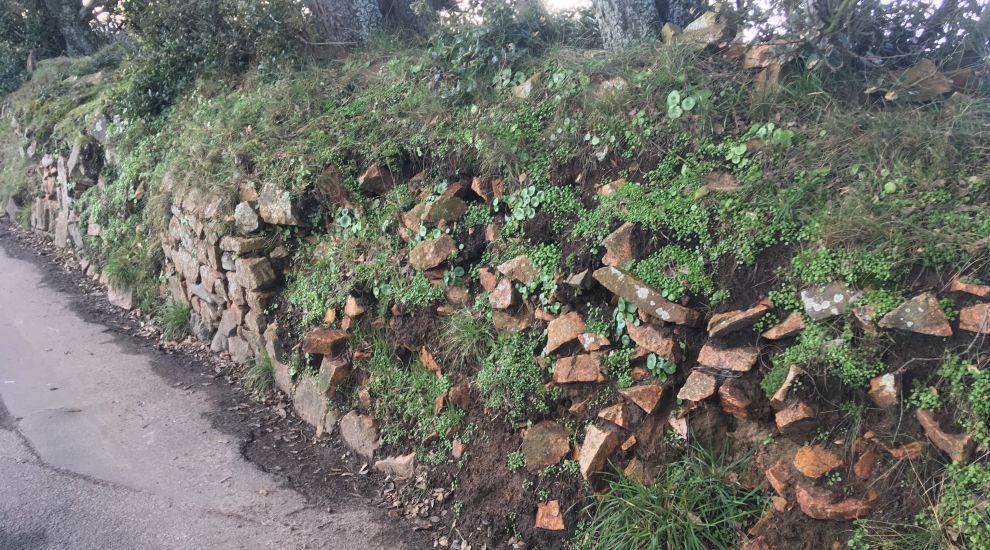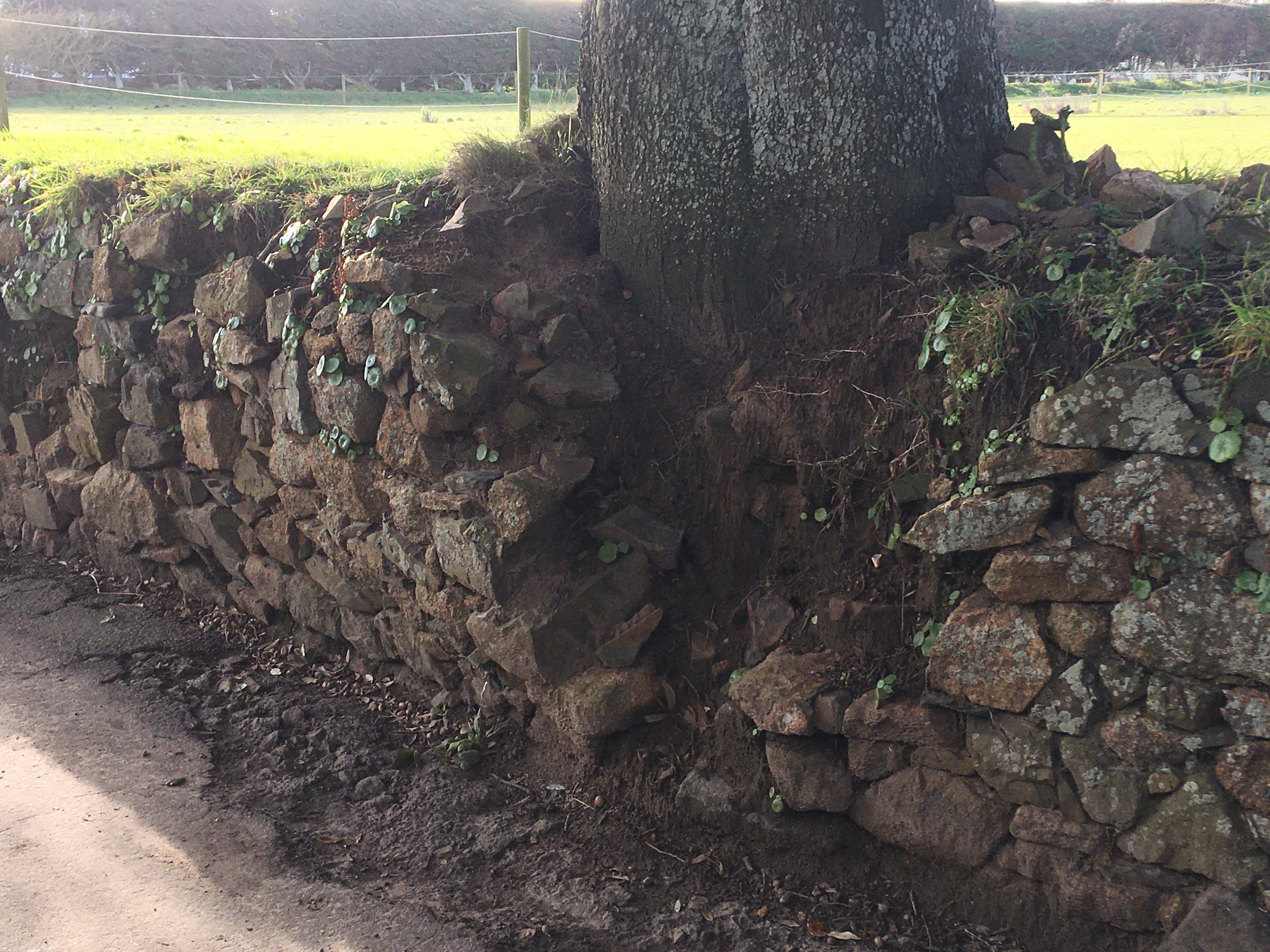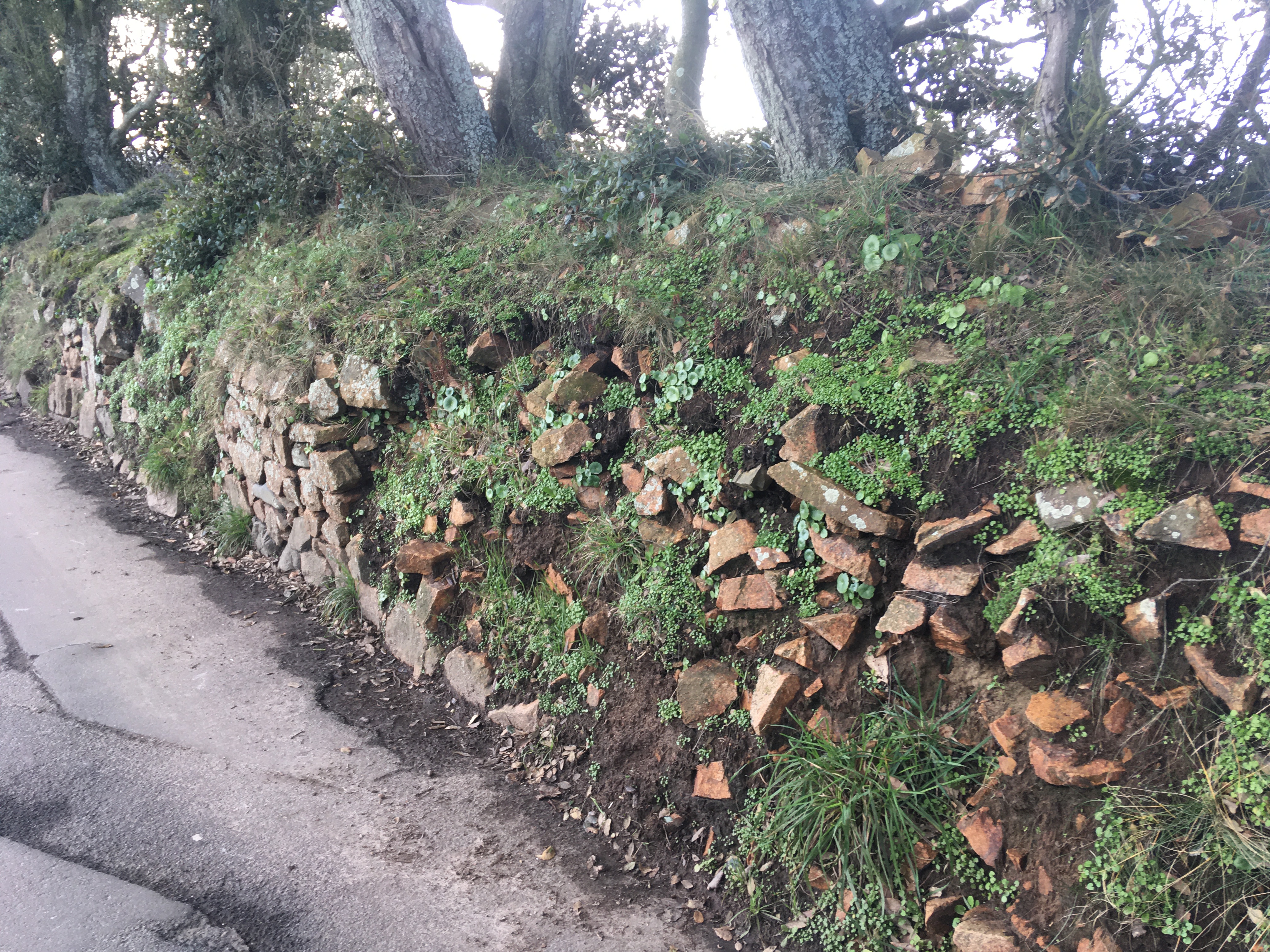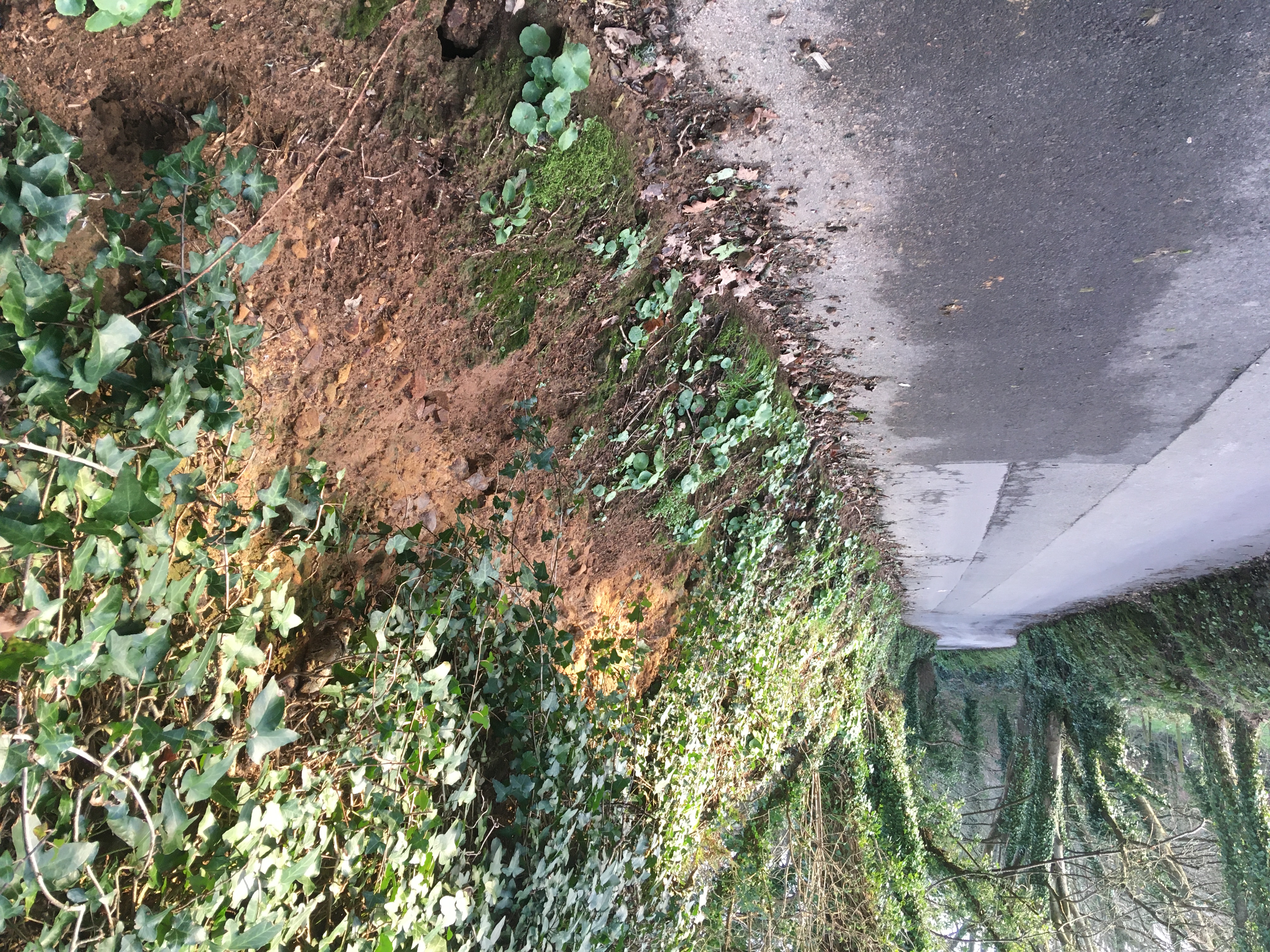


Jersey's distinctive countryside walls and banks are in urgent need of repair and funding, according to the Government and heritage groups.
After weeks of wet winter weather - something that is forecast to intensify with global warming - many of Jersey’s dry stonewalls, banques and fossés are being damaged.
Along country lanes, it is not uncommon to see walls bursting out, banks collapsed and large bare patches where the vegetation has fallen away.
It has prompted the National Trust to once again call for action to be taken to preserve the unique character of Jersey’s countryside.
Their concerns have been echoed by the Environment Minister and the Chairman of the Comité des Connétables - but all three concede that funding has to be found to ensure that action can be taken.

Pictured: This wall, along a lane in St. Ouen, has clearly been damaged by the growing tree.
“Our stonewalls, fossés and banques are not only part of our heritage but they are an integral part of our infrastructure too,” said Charles Alluto, Chief Executive of the National Trust.
“Their protection and maintenance has been a bit of a saga since Norman Le Brocq campaigned for their repair over two decades ago. Supplementary guidance was issued and some grant money was made available but this soon disappeared over time.
“I suspect there was also little take up as there is no real incentive for people to repair unless they think it is going to cause them a bigger problem down the road.
“I think the only way it would work now was if the condition of the banks and roadside walls became part of the branchage inspection, whereby each parish could order repairs to be undertaken."

Pictured: Another badly damaged section along the same lane in St Ouen.
He continued: “However, I think this needs to be accompanied by a grant scheme to help people offset what can be quite high costs for dry stone walling. In addition, it can be drivers and farm equipment that causes the damage in the first place."
St. Lawrence Constable Deidre Mezbourian, who chairs the Comité de Connétables, said that she felt that the parishes would be receptive to the National Trust's idea - but only if the funding for landowners was available.
“At the moment, the branchage law is quite specific: it is about the care of the roads to keep them safe for use. We cannot, for example, tell someone to remove a tree, even if it is likely to come down, if it isn’t directly damaging or blocking a road," she explained.

Pictured: A banque in St Martin, which has large bare patches due to its surface of vegetation eroding away.
“Normally, we would contact the owner and make them aware that we thought their tree was dangerous. People tend to be very reasonable about it and will usually get a tree surgeon in to have a look.
“Similarly for the banques, we don’t have the remit at the moment to tell anyone to reinstate them, unless it is crumbling into the road. If that’s the case, we can order the owner to remove the impediment.
“The majority of banques and fossés are owned by farmers or they’re rented by farmers, who would normally have a clause in their lease to maintain them - and they are often proactive.
“However, I totally agree that some are in dire need of repair, so I would support the National Trust. Unfortunately, the Government is very reluctant to give out money for nothing and, in fact, it has already removed funding for property owners who have listed buildings.
“But the long-term value of protecting our walls and banks is, for me, obvious.”
Environment Minister John Young said he too supported the National Trust - but he would first have to fight to get the required funding.
“The National Trust has my complete support; it is absolutely right that they have identified this as an important issue,” he said.

Pictured: St Lawrence Constable Deidre Mezbourian, who thought the Constables would support a change to the Branchage Law but only if central funding was in place to support landowners.
“Our sunken roads, which are reminiscent of the nearby French bocages, are an integral part of our environment and history. Over the years, there have been various attempts to conserve them, most prominently by the wonderful Mr Le Brocq, who was a stonemason himself, and at times it has worked.
“But all that has fallen away and we don’t have access to funding sources like the lottery, which they do in the UK. My department has had its budget cut and I’m doing my best to reverse that.
“The trouble is that there isn’t any work being done on this at the moment because my department has so much on its plate and I’m always fighting for money.
“Deputy Carolyn Labey is leading some work around the Island’s identity, and I’m hopeful that the preservation of our walls, banques and fossés fit into that.
“But I will continue to try to push our environment further up the agenda. Above all, everyone needs to respect Jersey’s environment - we mustn’t consume it; instead, we need to look after it, nurture it and look after it.”
Express asked Jersey Heritage to explain the significance of the Island’s stonewalls, banques and fossés...
Jersey’s roadside walls, fossés and banques are very much a key characteristic of the island’s landscape and are often historic structures in their own right.
Outside the core areas of 19th and 20th century expansion concentrated to the south, Jersey’s present predominate rural landscape is:
These patterns are very similar to those established in north-west France and south-west England by the 12th century.
There is documentary evidence of some enclosure and strip farming by the 14th century in Jersey and, in a few rare cases, enclosure may date to the prehistoric period. In other areas, open fields or common land was enclosed in the 18th and 19th centuries.
The form of enclosure adopted was usually the earthen bank topped with trees and pollards: these are the dominant form in the central and eastern parts of the island. In the west, earth banks planted with furze and thorn are more commonly found, with dry-stone walls found in sandier soils.
Some of the stone walls are built using lime mortar, whereas others are clay-jointed or dry-stone.
The Jersey terms that signify enclosure with walls, hedge or bank include Clos or Clios, which was used from the 13th century, and also Closiau, Cloture, Closet (used from the 15th century), together with Closqui and Closetel, Cotil, Costil, Coteau.
Comments
Comments on this story express the views of the commentator only, not Bailiwick Publishing. We are unable to guarantee the accuracy of any of those comments.